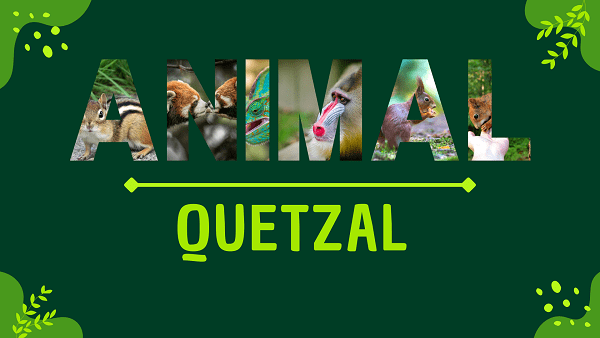Quetzal | Facts, Diet, Habitat & Pictures
Home » Animals » Quetzal | Facts, Diet, Habitat & Pictures
Quetzal Overview
Appearance
The Quetzal is a striking bird known for its resplendent plumage. It boasts emerald-green feathers on its upperparts and iridescent red breast and belly. The most distinctive feature is its long, streaming tail feathers that can extend up to three times the bird’s body length.
Its head showcases a vibrant green crown and striking red eye markings. The Quetzal’s slender body and elegant appearance make it an iconic symbol of beauty in the bird kingdom.
Origins And Evolution
The Quetzal’s origins trace back to Central and South America, with its evolutionary history spanning millions of years. Fossil evidence suggests its ancestors appeared during the Eocene epoch. Over time, these birds adapted to the lush forests and montane regions of their habitat.
The Quetzal’s evolution is characterized by the development of its striking plumage and elongated tail feathers, thought to aid in mating displays and maneuverability in dense forests. They belong to the Trogonidae family, known for its ancient lineage.
These birds played a significant role in Mesoamerican cultures, particularly the Mayans and Aztecs, who revered them for their vibrant plumage. The Quetzal’s evolutionary journey showcases its remarkable adaptation to tropical forest ecosystems and its enduring cultural significance in the region.
Behavior and Lifestyle
Quetzals are primarily solitary birds known for their elusive behavior. They inhabit the dense, high-canopy forests of Central and South America, where they are often difficult to spot due to their cryptic plumage. Their diet mainly consists of fruits, insects, and small vertebrates, which they hunt in the forest canopy.
Quetzals are known for their territorial nature and are particularly vocal during the breeding season when males display their vibrant plumage to attract mates. They are cavity-nesting birds, often using old woodpecker holes or natural tree hollows for nesting sites.
Quetzal Scientific Classification
- Kingdom: Animalia
- Phylum: Chordata
- Class: Aves
- Order: Trogoniformes
- Family: Trogonidae
- Genus: Pharomachrus (for Resplendent Quetzals)
- Species: Pharomachrus mocinno (for Resplendent Quetzals)
Quetzal Locations
- Central America
- South America
- Mexico
- Guatemala
- Costa Rica
- Panama
- Honduras
- Nicaragua
- El Salvador
- Colombia
Fast Facts
- Name: Quetzal
- Scientific Name: Pharomachrus spp.
- Habitat: Cloud forests
- Diet: Fruits, Insects
- Physical Features: Vibrant plumage
- Nocturnal: No, Diurnal
- Solitary: Mostly, Territorial
- Unique Order: Trogoniformes, Trogonidae
- Lifespan: 8-15 years
- Conservation Status: Near Threatened
- Fun Facts: Long tail, Resplendent feathers
Physical Characteristics
- Color: Brilliant green
- Skin Type: Feather-covered
- Top Speed: Moderate flyer
- Lifespan: 8-15 years
- Weight: Lightweight
- Length: 12-15 inches
- Age of Sexual Maturity: 1-2 years
- Age of Weaning: N/A (independent at fledging)
Quetzal FAQs
What is a Quetzal?
A Quetzal is a strikingly colored bird found in Central and South America, known for its vibrant plumage and cultural significance in the region.
Where can Quetzals be found?
Quetzals inhabit the dense, high-canopy forests of Central and South America, including countries like Guatemala, Costa Rica, and Panama.
What do Quetzals eat?
Quetzals primarily feed on fruits, insects, and small vertebrates, often plucking fruit while perched in trees.
Are Quetzals nocturnal birds?
No, Quetzals are diurnal birds, meaning they are active during the day and rest at night.
Do all Quetzals have the same striking appearance?
No, there are several species of Quetzals, and their specific coloration and markings can vary. The Resplendent Quetzal is the most famous for its vibrant colors.


